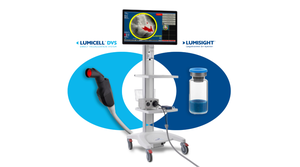CDRH director Jeff Shuren discussed updates to the TAP pilot, his top tips for MDR transition, and CDRH’s priority to advance health equity.

Understanding the evolving challenges sparked by the pandemic and highlighting regulatory updates took center stage at the MedCon 2023 conference in Columbus, OH, this week. In the session, “Returning to the New Normal in the Face of Evolving Challenges: Update from CDRH Director, Jeff Shuren,” Shuren highlighted several new initiatives and work in place to return to a new normal in the wake of the COVID-19 public health emergency.
One such initiative that the director of the Center for Devices and Radiological Health (CDRH) discussed was the latest Medical Device User Fee Amendments (MDUFA V). At its core, MDUFA is a set of agreements between FDA and the medical device industry to provide funds for the Office of Device Evaluations (ODE) to review medical device submissions, according to the Medical Device Academy.
MDUFA — also known as the Medical Device User Fee and Modernization Act (MDUFMA) — was first enacted in FY 2003 and would be reauthorized every five years. After the initial five years, the MDUFA II FDA Amendments Act was established in 2008 to continue user fee collections. MDUFA II also established tiered performance goals for 510(k) and premarket approval (PMA). In FY 2013, MDUFA III increased resources for medical device programs as well as created more aggressive performance goals and introduced interim performance milestones. MDUFA IV, which was authorized from FY 2018 to FY 2022, continued to increase resources, and created more aggressive performance goals for 510(k) and PMA. Additionally, it introduced new performance goals for De Novo and pre-submission while also establishing support for the National Evaluation System for Health Technology (NEST), digital health, the Accreditation Scheme for Conformity Assessment (ASCA) pilot, and patient engagement.
The Current MDUFA V, which will be in effect from 2023 until FY 2027, will improve goals for PMA and 510(k), Shuren noted in his presentation. Additionally, he explained, it will also improve the total time to decision, pre-submission, and De Novo. The current reauthorization introduces a new goal structure with “add-on” payments, supports global harmonization, and has created the TPLC Advisory Program (TAP) pilot.
TPLC or total product life cycle refers to a database that integrates premarket and post-market data about medical devices. “It includes information pulled from CDRH databases including [PMA], [510(k)], adverse events, and recalls,” according to FDA. “The TPLC database is refreshed as each of the individual data sources is updated.”
Discussing the TAP pilot, Shuren went into more detail on how the program has been updated to address previous problems. The program is voluntary and promotes frequent and early interaction between FDA staff and device sponsors to support the rapid development and availability of high-quality, safe medical devices for patients. He highlighted in his presentation that there is a new team of experts to provide “dynamic, strategic advice actively coordinated with FDA review teams and across the medtech ecosystem.” The program has also increased its “rapid response capacity to engage FDA reviewers and stakeholder experts across [the] full spectrum of device types.”
CDRH announced at MedCon that FDA has enrolled the first four devices in its TAP pilot, while three other devices have been rejected so far.
The transition to the EU Medical Device Regulation (MDR) was also featured as part of the session. To prepare for the change, Shuren gave his top 10 transition tips. Of the 10, some of his tips included a gap analysis between pre- and post-transition regulatory expectations, to make smart use of the pre-submission program, and to describe any product changes made since it was last cleared or approved.
Looking to the future, he detailed CDRH’s 2022 to 2025 strategic priority to “Advance Health Equity.” To do this, CDRH broke its strategy four-fold, including:
Reduce barriers and increase opportunities for participation by diverse populations in evidence generation;
Support innovation of novel technologies that address health equity gaps;
Facilitate availability of and access to existing and novel home-use medical technologies for all populations; and
Empower people to make informed decisions regarding their healthcare.
About the Author(s)
You May Also Like




